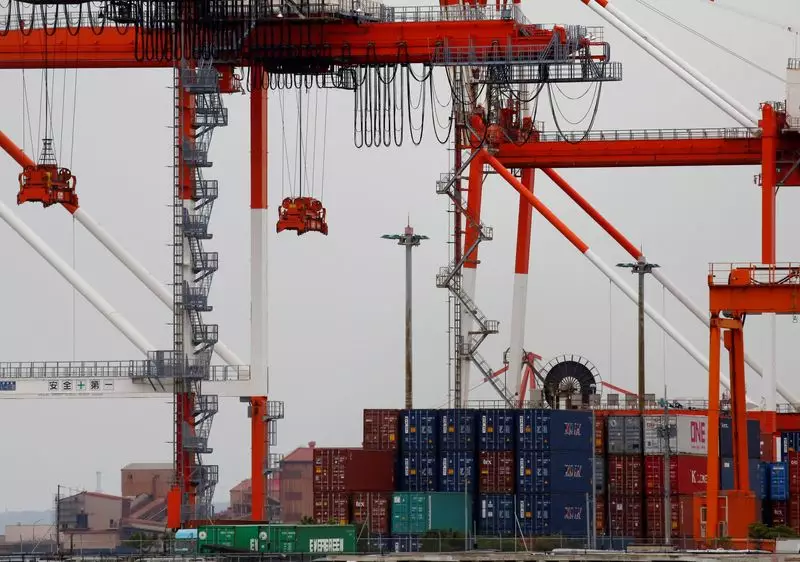Japan’s recent data on exports in May reveals a concerning trend – while the weak yen has contributed to a significant increase in the value of exports, the volume of sales has been decreasing for the fourth straight month. This paints a picture of global demand that is still relatively soft, posing challenges for the economy. The Bank of Japan’s recent decision to reduce its bond purchases signals a move towards tightening its monetary policy, but the soft underbelly in the trade report suggests that future interest rate hikes may not be a straightforward path.
The data from the Ministry of Finance shows that shipments rose 13.5% year-on-year in May, primarily boosted by U.S. and China-bound exports. However, the increase in exports in value terms can largely be attributed to the weak yen, as the volume of exports actually saw a 0.9% decline year-on-year. This indicates that while the currency dynamics may have inflated the value of exports, the underlying global demand remains tepid.
The challenges in Japan’s export sector reflect broader global economic struggles. China, a key driver of global growth, has been facing difficulties in achieving a robust post-COVID recovery due to its ongoing property sector crisis. The ripple effects of these challenges are being felt in major exporting nations like Japan, putting pressure on domestic consumers to drive economic growth. The weak overseas demand poses a threat to policymakers’ expectations of exports offsetting weak domestic consumption.
Implications for Economic Recovery
The recent trade data, coupled with declining confidence among big manufacturers, paints a complex picture of Japan’s economic recovery. Analysts are predicting that net trade will have a negative impact on the country’s second-quarter GDP growth, with expectations of modest expansion following a contraction in the previous quarter. The trade balance, although showing a deficit smaller than expected, still raises concerns about the sustainability of economic growth.
Exports to China saw a significant increase in May, driven by demand for chip-making machinery. However, this growth was not mirrored in exports to the European Union, which fell by 10.1%. U.S.-bound shipments, on the other hand, experienced a substantial increase, highlighting the significance of the American market for Japan. The disparity in export destinations underscores the challenges of navigating a global economy that is characterized by uneven recovery patterns.
Japan’s economic landscape presents a mix of opportunities and challenges. While the weak yen has temporarily boosted the value of exports, the underlying weaknesses in global demand and the uneven recovery across key markets pose significant hurdles for sustained economic growth. Policymakers will need to navigate these complexities carefully and address the fragilities in both domestic consumption and international trade to ensure a stable and resilient economic future.

